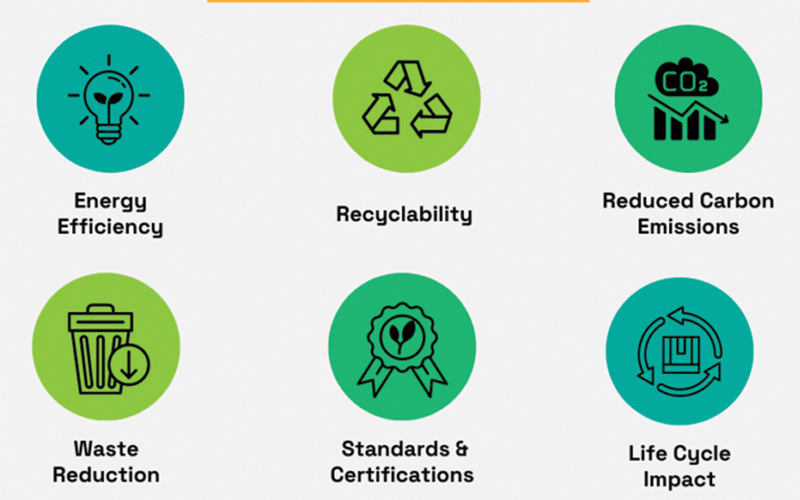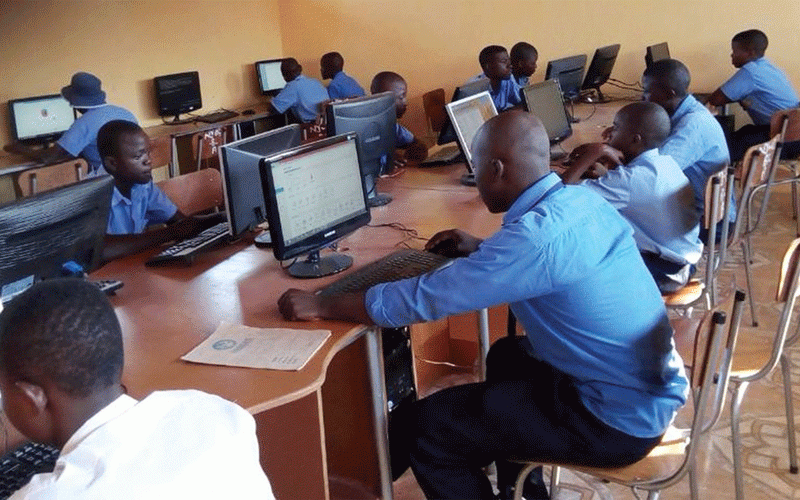
BELOW is a book excerpt from Artificial Intelligence: A Driver of Inclusive Development and Shared Prosperity for The Global South:
A key foundational requirement — an indispensable enabler — of the AI Revolution is energy. Without adequate, reliable and continuous power, the benefits of AI will be sub-optimal if not inconceivable.
Consequently, it is instructive to discuss the global energy crisis from a Global South perspective. Power and energy are related. The difference lies in what they measure.
Energy is the total amount of work that a system can do. It is measured in joules (J) and represents the capacity to perform work or produce heat. For instance, energy can be stored in batteries or transferred through electricity.
The standard units of energy include joules (J), kilowatt-hours (kWh), and calories. On the other hand, power is the rate at which energy is used or transferred.
It measures how quickly energy is consumed or produced. Power is measured in watts (W), where one watt is equal to one joule per second. The standard units of power include watts (W), kilowatts (kW), and horsepower (hp).
Given this relatedness and interdependence of energy and power, the two terms are sometimes used interchangeably in public discourse. Related energy sources include electricity, heat, coal, oil, gas, sun, wind, and nuclear materials.
What is global energy crisis?
- Border Timbers targets European markets
- Hwange nears town status
- Zimsec 2021 O-Level results out
- Border Timbers targets European markets
Keep Reading
The global energy crisis is defined by a significant and widespread shortage or imbalance in the supply and demand for non-renewable energy resources, leading to rising energy prices, economic disruptions, and potential fuel and electricity shortages.
Put differently, energy crisis refers to any significant reduction, bottleneck or severe blockage in the supply of energy resources to an economy, insufficient supply of electricity or fuel for industrial and domestic consumption, and scarcity of non-renewable energy sources that provide national electrical grids or are utilised as fuel for vehicles.
A combination of factors has caused this crisis. The primary driver is the growing global demand for energy. This has been ignited by growing global populations, industrialisation, and rising energy consumption, especially in developing economies, which have strained existing energy supplies.
Natural resources used to produce energy are in limited supply, while the world’s demands for energy are soaring. It is prudent to note that natural resources are not necessarily absent, but may exist in a raw unusable form.
More significantly, insufficient attention has been given to harnessing energy from renewable sources, such as solar and wind. All this is foundational to the global energy crisis.
Supply chain disruptions have compounded the challenge. Wars, political instability, trade disputes, or natural disasters can lead to disruptions in energy production and distribution.
For example, conflicts in energy-rich regions, such as the Russia-Ukraine war, have impacted oil and natural gas supplies. More specifically, the Russia-Ukraine conflict exacerbated the global energy crisis.
Before the war, 60% of Russian oil exports went to Europe. Russia is the world’s second-largest producer of natural gas after the United States.
Russia has the world’s largest gas reserves and is the world’s largest gas exporter. Hence, the Russia-Ukraine war disrupted the energy supply from Russia to Europe and posed an existential threat to Europe.
In the aftermath of the Covid-19 pandemic, there were shortages and price increases for oil, gas, and electricity. Rapid post-pandemic economic rebound outpaced energy supply.
There was a slow energy supply recovery after the pandemic. Furthermore, the global rapid depletion of non-renewable energy resources is alarming. The finite nature of fossil fuels, such as oil, coal, and natural gas, has led to concerns about the long-term sustainability of energy production.
As easily accessible reserves are depleted, extraction becomes more expensive and environmentally damaging. It can take thousands of years (if at all possible) to replenish natural resources.
It is instructive to state that there are now less than 100 years of coal supply left, less than 150 years of oil, and less than 200 years of gas. These remaining years are all less than the time since the start of the First Industrial Revolution.
Additionally, while it is estimated that an erect person has walked the planet for 200 000 years, it has taken human beings less than 0,2% of that time to burn through 50% of the total amount of the fossil energy that has ever existed!
Indeed, environmental pressures have been significant drivers of the energy crisis. Efforts to combat climate change and transition to renewable energy sources have created tensions.
The shift away from coal and oil can sometimes lead to short-term energy shortages, especially when renewables like wind and solar cannot fully meet demand due to variability. What is worse, infrastructure challenges have been crippling.
Ageing or inadequate energy infrastructure in parts of the world, particularly the Global South, can limit the ability to transport and distribute energy effectively.
The global energy crisis has significant implications for economic stability, energy security, and efforts to combat climate change. It highlights the urgent need for investment in renewable energy sources, energy efficiency, and innovation in energy storage technologies to ensure a stable, sustainable energy future.
More importantly, it demands a well-thought-out strategy from the Global South, taking into account the countries' unique challenges, histories, priorities, and developmental ambitions.
The number one energy problem in the Global South is energy poverty. These countries' perspectives on the global energy crisis should be anchored around the eradication of this scourge.
Energy poverty, related challenges
Energy poverty refers to a situation in which individuals or communities lack access to modern energy services necessary for basic human needs, such as lighting, cooking, heating, and powering essential appliances and equipment.
The lack of reliable and affordable access to electricity and other forms of energy characterises it. Energy poverty has social, economic, and environmental implications, affecting millions of people worldwide, particularly in developing countries.
The Global South faces numerous energy and power challenges that impact economic development, quality of life, and overall sustainability.
These challenges are often complex and interconnected, influenced by factors such as population growth, urbanisation, limited infrastructure, and economic constraints.
Indeed, inadequate infrastructure, including outdated power grids and transmission networks, poses challenges in delivering electricity efficiently.
Poor infrastructure can lead to power losses during transmission and distribution, reducing the overall reliability of the energy supply. Limited financial resources and investment in the energy sector can impede the development of new energy infrastructure and the expansion of existing systems.
This lack of investment can result in an insufficient capacity to meet growing energy demands. Economic constraints in the Global South limit governments’ investment in energy projects and infrastructure development.
High upfront costs for renewable energy projects may hinder adoption despite the long-term benefits. Limited access to advanced energy technologies and a lack of technology transfer mechanisms impede the adoption of cleaner and more sustainable energy solutions. Developing countries often face challenges in acquiring and implementing cutting-edge technologies.
There are several dimensions of energy poverty. Lack of access to electricity is a key measure. Many individuals and communities in the Global South lack electricity or have only sporadic access.
This limits their ability to power lights, appliances, and electronic devices, hindering various aspects of daily life. Without modern energy sources, people in energy poverty often rely on traditional and often polluting fuels, such as biomass (wood, dung), kerosene, or coal, for cooking and heating.
This can have adverse health effects due to indoor air pollution. Lack of access to reliable energy services can impede economic development.
It hampers individuals’ ability to engage in income-generating activities, limits productivity, and constrains opportunities for entrepreneurship.
Students in households without electricity may face challenges in studying after dark, which can impact their educational outcomes. Limited access to energy can also impact schools and academic institutions.
Many countries in the Global South heavily depend on non-renewable energy sources, including coal, oil, and natural gas. This dependence can make energy systems vulnerable to price fluctuations, geopolitical tensions, and environmental challenges.
Indeed, dependence on traditional and polluting fuels for cooking and heating contributes to indoor air pollution, which leads to respiratory diseases and other health issues, particularly among women and children who spend more time indoors.
Reliance on traditional fuels contributes to deforestation and environmental degradation. Burning these fuels releases greenhouse gases and particulate matter, contributing to climate change and air pollution.
Energy poverty is often more prevalent in rural areas compared to urban areas. Remote and off-grid communities may face more significant challenges in accessing modern energy services.
Indeed, the use of non-renewable energy sources contributes to pollution, thereby exacerbating the global carbon footprint. This has negative implications for public health and worsens climate change challenges, affecting vulnerable communities in the Global South.
This is compounded by the fact that these developing countries are disproportionately affected by the devastating impacts of the climate crisis, including extreme weather events, changing precipitation patterns, and rising sea levels. These factors can disrupt energy infrastructure and exacerbate energy poverty.
Erratic power supply, load-shedding
In some countries in the Global South, even if there are electric grids, the power supply is erratic and unstable. This is because of poor infrastructure, ineffective maintenance, a lack of expertise, extreme weather events, and natural disasters.
Nigeria is a prime example. In some economies, the power from the grid is not enough to satisfy national demand. Hence, electricity is purposely switched off for several hours depending on the severity of the shortage. It is called load-shedding.
The exercise is conducted on a rotational basis across the country, sharing the limited energy supply. Zimbabwe, Zambia and South Africa have been implementing different schedules of this disruptive energy management system in the past five years.
For illustration, at peak load-shedding, Zambia’s national power demand is 1 815MW, while that available is 1 300MW. For South Africa, the numbers are 38 800MW and 30 000MW, respectively; for Zimbabwe, the figures are 2 200MW and 1 600MW, respectively.
For each country, the difference between the two numbers is the power shortage, which leads to the load-shedding programme.
Even when energy services are available, they may be unaffordable for many households. High energy costs relative to income contribute to energy poverty, limiting individuals} ability to meet their basic energy needs.
Inefficient energy use in sectors such as industry, transportation, and buildings contributes to energy waste. Addressing energy efficiency is crucial for optimising energy consumption and reducing overall demand.
Rapid population growth and urbanisation increase the energy demand. Providing adequate and sustainable energy services to growing urban populations presents significant challenges in infrastructure planning and resource management.
Resolving energy challenges in the Global South, particularly energy poverty, requires expanding access to modern and sustainable energy services, improving energy efficiency, and promoting clean and renewable energy sources.
It requires a combination of policies, investments, and technological innovations to create sustainable and inclusive energy systems that benefit all segments of society, particularly those most vulnerable to energy poverty.
The United Nations’ Sustainable Development Goal 7 (SDG 7) targets explicitly universal access to affordable, reliable, sustainable, and modern energy by 2030.
Indeed, addressing these challenges requires a multifaceted approach involving investments in renewable energy, improvements in energy infrastructure, policy interventions, international collaboration, and efforts to promote sustainable and inclusive development.
Initiatives prioritising access to clean and affordable energy can contribute to mitigating the energy and power challenges faced by the Global South.
Without addressing the energy deficits characterising emerging and least industrialised countries, using AI to drive inclusive development and shared prosperity in these economies will remain a worthy ambition but an unachievable goal.
Mutambara is the director and full professor of the Institute for the Future of Knowledge at the University of Johannesburg in South Africa.











